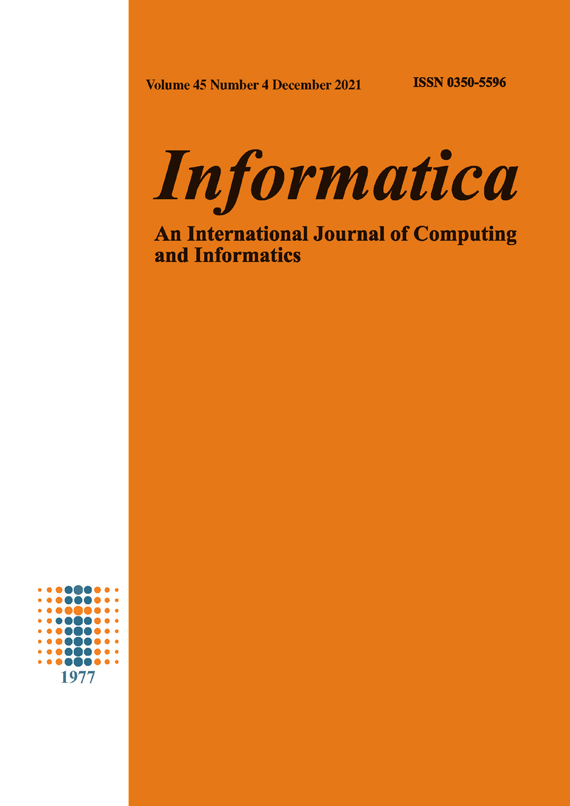A practical framework for real life webshop sales promotion targeting
DOI:
https://doi.org/10.31449/inf.v45i4.3066Abstract
In recent years online marketing has become increasingly extensive and effective. Product recommender systems are often deployed by e-commerce websites to improve user experience and increase sales. To address this, more and more e-commerce started to use machine learning models to predict customers purchase behaviors. In the scientific literature there are only few real-life studies to date which give solutions for recommendation systems for online advertising. The demand from the owners of such websites is given, however, it is hard for them to choose a method or model to predict from an endless number of options for some specific circumstances. The aim of this paper is to propose a practical guideline as a hybrid approach that predicts customers purchase behaviors and helps to target advertisement, sales form in user level. To this end, we have designed a robust hybrid model to predict interested sales form based on user behavior within a large e-commerce website. The aim of this paper is to detail a real-life practical solution and build a structure that can be used in a large variety of e-commerce systems.
References
Ahmed, A., Low, Y., Aly, M., Josifovski, V., andSmola, A. J. Scalable distributed inference of dynamic user interests for behavioral targeting, In: Proceedings of the 17th ACM SIGKDD international conference on Knowledge discovery and data mining, 2011
Aly, M., Hatch, A., Josifovski, V., and Narayanan, V. K. Web-scale user modeling for targeting. Proceedings of the 21st International Conference on World Wide Web, 2012
Banerjee, A., and Ghosh, J. Clickstream Clustering using Weighted Longest Common Subse-
quences. In: The Web Mining Workshop at the 1st SIAM Conference on Data Mining, 2001
Bozanta, A., and Kutlu, B. Developing a Contextually Personalized Hybrid Recommender
System, Mobile Information Systems, Article ID 3258916, 2018
Breiman L. Random forests - random features. Technical Report 567, Statistics Depart-
ment, University of California, Berkeley, 1999
Burke, R. Hybrid recommender systems: Survey and experiments. User modeling and user-adapted interaction, 12(4), 331-370, 2002
Chen T. and Guestrin C. XGBoost: A Scalable Tree Boosting System. Proceedings of the 22nd ACM SIGKDD International Conference on Knowledge Discovery and Data Mining, pp. 785-794, 2016
Cook R.D. Detection of influential observations in linear regression. Technometrics, 19(1):15- 18, 1977
John N. D. and Ratcliff D. Generalized iterative scaling for log-linear models. The Annals of Mathematical Statistics, 43(5):1470-1480, 1972
Çano, E., Morisio, M. Hybrid recommender systems: A systematic literature review. Intelligent Data Analysis, 21(6), 1487-1524, 2017
Essex, D. Matchmaker, matchmaker. Communications of the ACM, 52(5):16-17, 2009.
P. Geurts, D. Ernst., and L. Wehenkel, Extremely randomized trees. Machine Learning, 63(1), 3-42, 2006.
Grbovic, M., Radosavljevic, V., Djuric, N., Bhamidipati, N., Savla, J., Bhagwan, V., and Sharp, D.
E-commerce in Your Inbox: Product Recommendations at Scale. In: Proceedings of the 21th ACM SIGKDD International Conference on Knowledge Discovery and Data Mining, 2015
Hoerl, A. E., Kennard, R. W., Ridge Regression: Applications to Non-Orthogonal Problems. Technometrics 12(1), 69-82, 1970
James G. Majority vote classifiers: theory and applications. PhD thesis, Stanford University, 1998
Ke, G., Meng, Q., Finley, T., Wang, T., Chen, W., Ma, W., Ye, Q., and Liu, T. Y. LightGBM: A Highly Efficient Gradient Boosting Decision Tree. In: Advances in neural information processing systems, pp. 3146-3154, 2017.
Park, T., Casella, G., The Bayesian Lasso. Journal of the American Statistical Association 103(482), 681-686, 2008
Sidana, S. Recommendation systems for online advertising. Computers and Society [cs.CY]. Université Grenoble Alpes, 2018.
Vieira, A. Predicting online user behaviour using deep learning algorithms. arXiv preprint arXiv:1511.06247, 2015
Weiss, A. A Comparison of Ordinary Least Squares and Least Absolute Error Estimation. Econometric Theory, 4(3), 517-527, 1988
Zhang, Y., and Pennacchiotti, M. Predicting purchase behaviors from social media, In: Proceedings of the 22nd international conference on World Wide Web, 2013
Downloads
Published
Issue
Section
License
I assign to Informatica, An International Journal of Computing and Informatics ("Journal") the copyright in the manuscript identified above and any additional material (figures, tables, illustrations, software or other information intended for publication) submitted as part of or as a supplement to the manuscript ("Paper") in all forms and media throughout the world, in all languages, for the full term of copyright, effective when and if the article is accepted for publication. This transfer includes the right to reproduce and/or to distribute the Paper to other journals or digital libraries in electronic and online forms and systems.
I understand that I retain the rights to use the pre-prints, off-prints, accepted manuscript and published journal Paper for personal use, scholarly purposes and internal institutional use.
In certain cases, I can ask for retaining the publishing rights of the Paper. The Journal can permit or deny the request for publishing rights, to which I fully agree.
I declare that the submitted Paper is original, has been written by the stated authors and has not been published elsewhere nor is currently being considered for publication by any other journal and will not be submitted for such review while under review by this Journal. The Paper contains no material that violates proprietary rights of any other person or entity. I have obtained written permission from copyright owners for any excerpts from copyrighted works that are included and have credited the sources in my article. I have informed the co-author(s) of the terms of this publishing agreement.
Copyright © Slovenian Society Informatika








